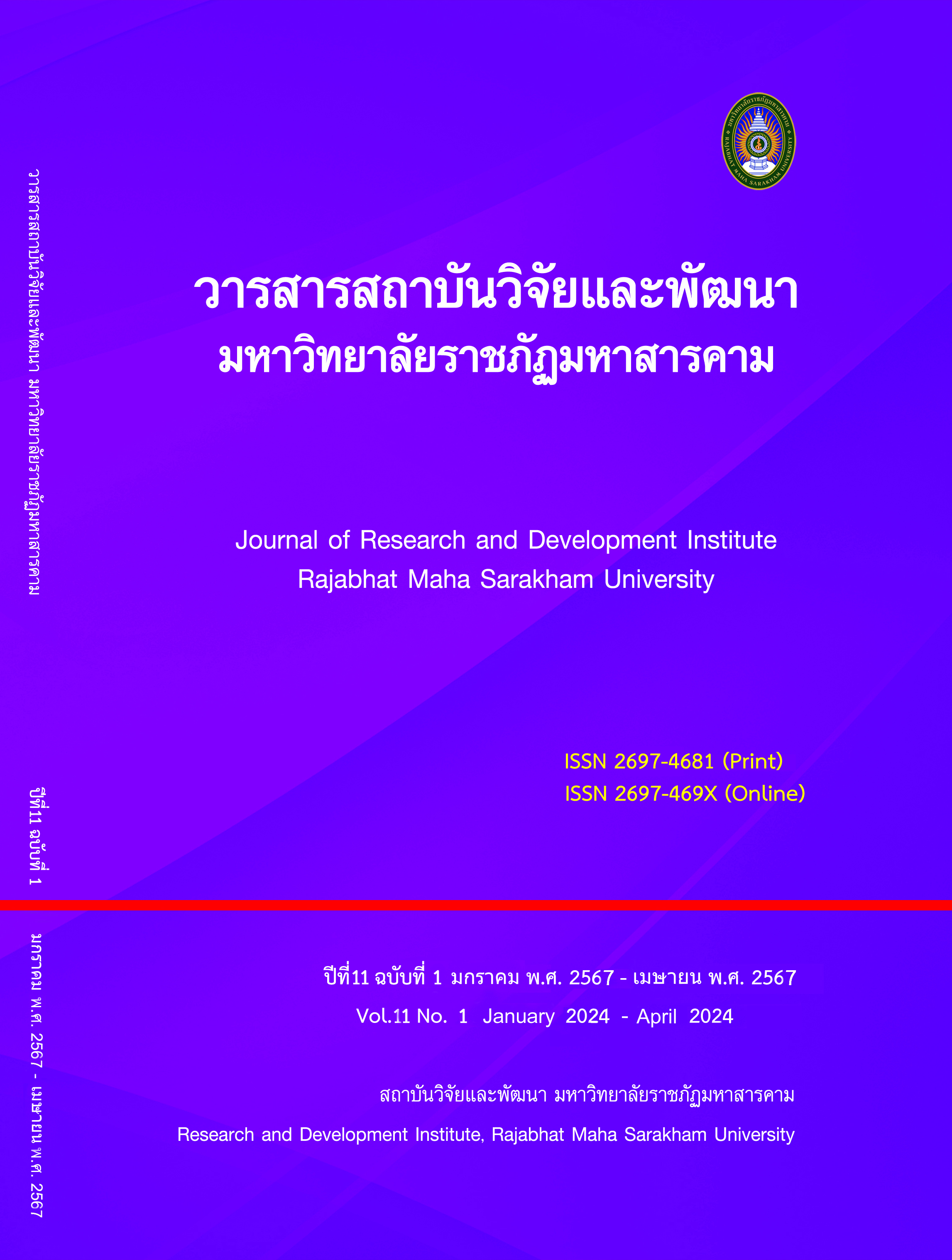Strategies for the Tax Mapping and Property Registration to Increase the Efficiency of Revenue Collection of Local Government Organizations
Keywords:
strategies, tax mapping, property registration, efficiency of revenue collectionAbstract
This academic article discusses strategies for the tax mapping and property registration to increase the efficiency of revenue collection of local government organizations.The Constitution of the Kingdom of Thailand, Section 284, issued the Act on Decentralization Plans and Procedures for Local Governments, B.E. 2542 and the second amendment of B.E. 2006, specifying the scope of responsibility in the public service system, and allocated the proportion of taxes and duties to local area; in order to have income that can be used for development and self-government under the supervision of the government, the proportion of local income comes from taxes that the local government collects, taxes that the state collects instead, taxes that the state collects and then gives to localities in order to bring income to develop their own locality to have progress, people have a good life, have the complete Public Utilities System and Public Facilities System Therefore, local government organizations are looking for ways to increase efficiency in revenue collection by finding the various strategies to prepare tax maps and property registers: for example, satellite technology, air photos technology, artificial intelligence technology, property registration digital, the tax map program (LTAX GTS), developing the system in the form of an online web map via the internet using the set of commands in PHP, JavaScript, and HTML, and displaying the location on the Google Map API to help inspect, search, and edit information; and prepare risk management plans for projects to develop tax mapping and property registration systems, etc.
The important elements that will help increase the efficiency of revenue collection of local government organizations in clude:(1) the tools are the tax mapping and property registration. Currently in the digital age, information technology systems are used to help store data through the LTAX GIS, LTAX3000 operating systems of the Department of Local Administration; and it is developing the operating system for integrated operations to be LTAX Online, but they must consider updating information regularly and all the time; including increasing communication channels with the public in various formats and providing online services that provide convenience such as filing the tax forms and paying taxes can be done more conveniently, quickly, timely and fairly, as well as being able to monitor and evaluate results effectively; (2) the relevant personnel must know their roles and responsibilities and treat taxpayers equally; have service standards for the public, continuously develop themselves; and provide off-site tax payment services; and (3)the citizens must know their civic duties and cooperate in paying taxes as provided by law; because the taxes received are considered income that is used to develop the country and in turn benefits everyone; therefore, they will increase the efficiency of revenue collection of local government organizations
References
Chetkhunthod, P. (2011). impact of good corporate governance strategies on internal audit operations of businesses receiving investment promotion in Thailand. Journal of Accountancy and Management, 4(2), 75-84.
Kanpook, A. (2021). Developing tax revenue collection of local administrative organizations. Group of provinces in the northeastern central region. Khon Kaen: Khon Kaen University.
Khonthong, W. (2010). Guidelines for developing the efficiency of revenue collection of local administrative organizations in Kamphaeng Phet Province. Kamphaeng Phet : Kamphaeng Phet Rajabhat University.
Kongpha, C. (2017). Problems and obstacles to revenue collection of Thung Khwang Subdistrict Administrative Organization. Phanat Nikhom District Chonburi Province. Bangkok : Thammasat University.
Mahile, N. (2022). Factors affecting the efficiency of land and building tax collection of local government organizations in Narathiwat Province. Songkhla: Prince of Songkla University.
Nanta, N. (2022). Effectiveness in tax collection of subdistrict municipalities in San Sai District. Chiang Mai Province. Chiang Mai Province: Maejo University.
Ngamchan, C. (2018). Increasing the efficiency of revenue collection of Phangat Subdistrict Administrative Organization. Kham Sakaesaeng District Nakhon Ratchasima Province. Nakhon Ratchasima Province: Suranaree University of Technology.
Nukulsomprathana, P. (2022). Know the word strategy (Strategy). [Online}. https://www.popticles.com/business/type-of-strategy/ [3 October 2023]
Report on the performance of the risk management plan of Phon Thong Municipality, Kalasin Province, fiscal year 2023. [Online] https://www.phonthong-mu.go.th/fileupload/5817033108.pdf [17 October 2023]
Serirat, S. et al. (2002) Strategic management and case studies. Bangkok : Teera Film and Sitex Co., Ltd.
Tonson, M. (2000). Business strategy. Bangkok : Expert Net.
Wilaipan, S. et al. (2015). Strategies for increasing efficiency in revenue collection of Theparat Subdistrict Administrative Organization Ban Pho District Chachoengsao Province. The National Conference on Business Management and Innovation 2015 (NCBMI 2015), 308-315
Wimon, W. (2016). Development of tax map and property registration databases on the internet. Study area: Panchali Subdistrict, Wang Thong District, Phitsanulok Province. Phitsanulok : Naresuan University.
Downloads
Published
How to Cite
Issue
Section
License
Copyright (c) 2024 ปาลิดา เชษฐ์ขุนทด, บุญมา อิ่มวิเศษ

This work is licensed under a Creative Commons Attribution-NonCommercial-NoDerivatives 4.0 International License.
Articles that are published are copyrighted by the authors of the articles







